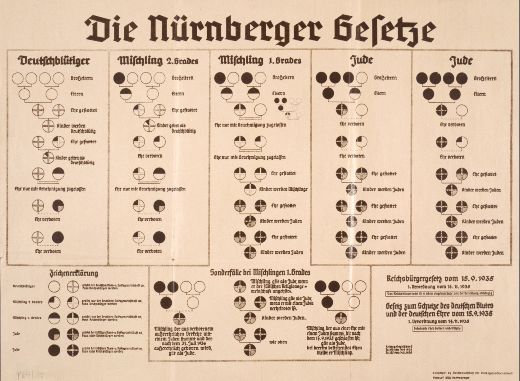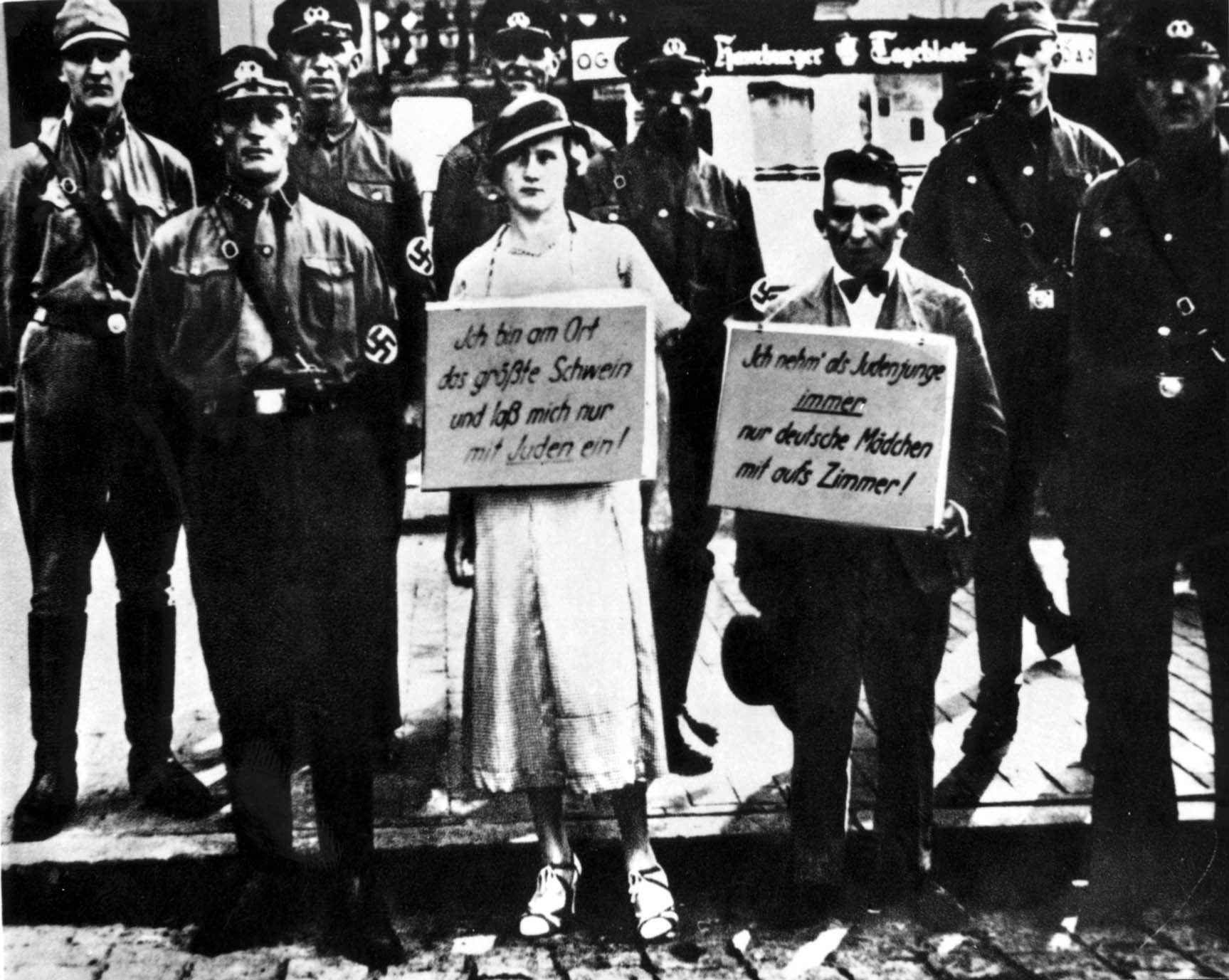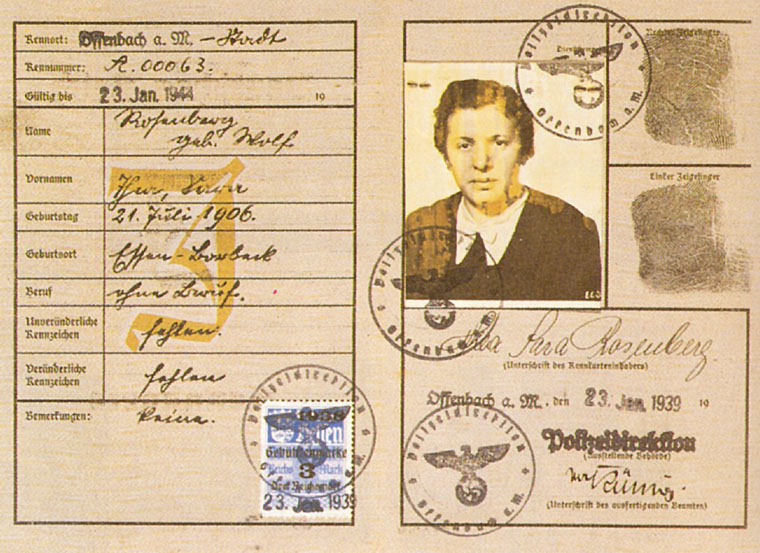On 15 September 1935, the Reichstag, on a special meeting convened in Nuremberg, passed racist laws, commonly known as the Nuremberg Laws. Under these laws the Jews became second-class citizens or were rather simply deprived of civic rights. The Reich Citizenship Law and the Law for the Protection of German Blood and German Honour stated that a person of Jewish descent could not be a citizen of the German Reich because such a person did not have German blood. A Jew was somebody, whose ancestors, even going back three generations, were of Jewish origins. Legal regulations now excluded Jews from political, social and cultural life. They were deprived of the rights of a Reich citizen, including the right to vote, hold public offices or do military service. Mixed marriages were forbidden (i.e. between Jews and citizens of German blood) and German spouses in such marriages were encouraged to divorce. Sexual contact between a Jew and a German was treated as a criminal offence. Persons accused of ‘desecrating the race’ were arrested and sent to a concentration camp. Jews were forbidden to employ as house servants non-Jews under the age of 45. They were also forbidden to purchase cars, valuable items, telephones or even animal pets. German Jews became ‘subjects of the Reich’ deprived of all civic rights. By 1939 over two thousand anti-Jewish rules and regulations had been introduced to German law.
In 1936, attacks against the Jews decreased slightly due to the Olympic Games being held in Berlin. But at the start of 1938 the persecution was resumed with renewed energy. In Austria after the Anschluss, the same anti-Jewish decrees applied as in Germany. To facilitate the appropriation of their real estate, Jews were forced to register everything that belonged to them. Many were forced to sell their estates at below market prices, while those who resisted simply had their estates confiscated. To ease identification, the authorities ordered Jews to adopt additional Jewish names: Israel or Sara. Their passports were stamped with the letter ‘J’.



